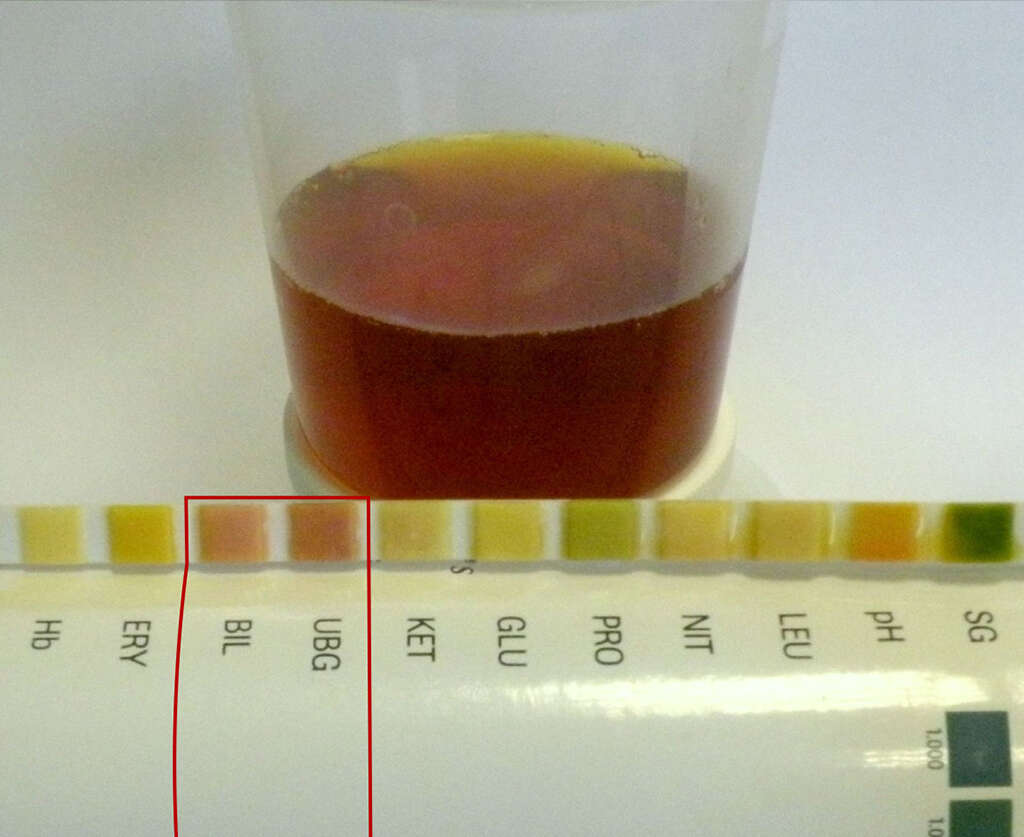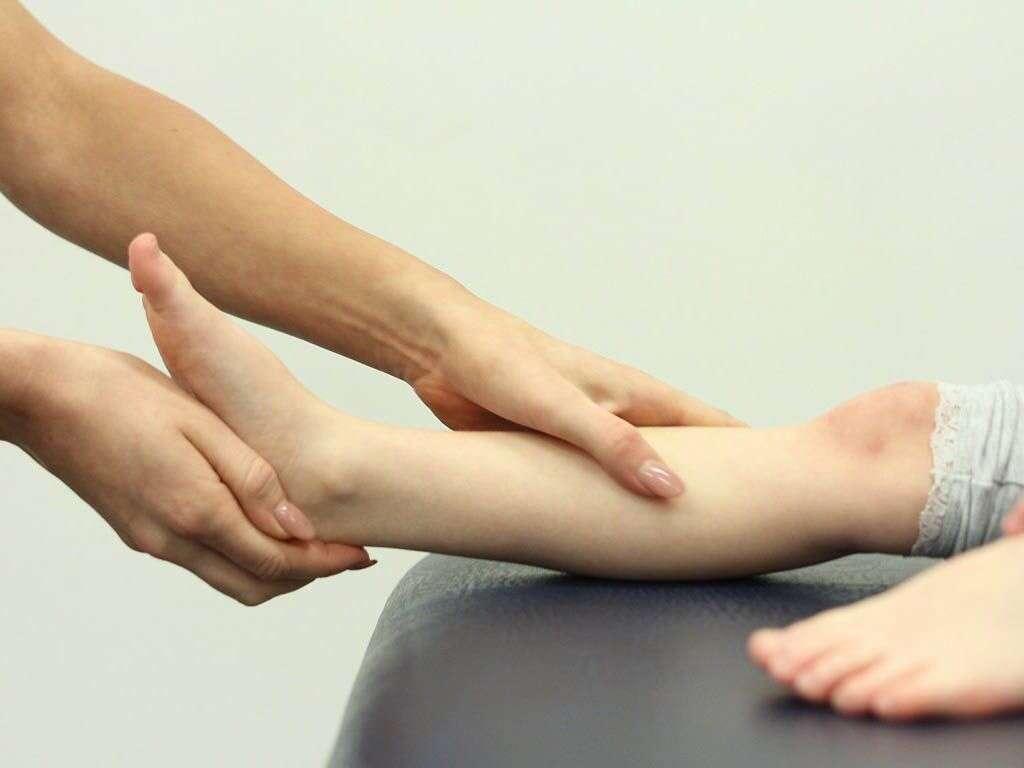10 Symptoms of Rhabdomyolysis
Rhabdomyolysis is a condition where damaged skeletal muscle rapidly breaks down. The products from the breakdown such as myoglobin can be harmful to the kidneys and may result in renal failure. the damaged skeletal muscle can be from strenuous exercise, crush injury, medications, infections, drug abuse, heat stroke, electrical injury, lack of blood flow to a limb, prolonged immobilization, snake bites, and more. Some patients have inherited conditions where they have an increased risk of rhabdomyolysis. The diagnosis can be supported using a urine test strip and a blood test for creatine kinase.
Treatment for rhabdomyolysis mostly involves large quantities of intravenous fluids. Other options include dialysis or hemofiltration. Early treatment usually means a good prognosis. Complications of rhabdomyolysis are high blood potassium (hyperkalemia), low blood calcium (hypocalcaemia), compartment syndrome, and disseminated intravascular coagulation. Every year in the United States, it is estimated that rhabdomyolysis affects about 26,000 individuals. It is one of the major conditions seen among those involved in traumatic events such as earthquakes and other disasters.

Symptom #1: Myalgia
Myalgia or muscle pain is a common and non-specific symptom that can be seen in many situations. The most common cause of myalgia is the overuse, overstretching, or injury of the affected muscles. Without any traumatic history, myalgia can occur because of viral infections, nutritional deficiency, metabolic myopathy, chronic fatigue syndrome, side effect of medications, autoimmune disorders, rhabdomyolysis, and more. It should be noted that myalgia is not always present with rhabdomyolysis.
Beside treatment for the underlying disease, myalgia can also be treated symptomatically through rest, heat packs, paracetamol (acetaminophen), non-steroidal anti-inflammatory drugs (NSAIDs), muscle relaxants, topical ointments, and more. If rhabdomyolisis is suspected, seek medical help as conservative measures will not treat and may even worsen this dangerous syndrome.

Symptom #2: Nausea
Nausea is described as an uncomfortable and unpleasant sensation where the affected individual has an urge to vomit. Prolonged nausea can become debilitating as it causes discomfort in the upper abdomen, chest, and back of the throat. Nausea is a way the body uses to discourage the person from repeating whatever has caused the unpleasant sensation. The memory of nausea can be very powerful as it can cause revulsion towards whatever has caused the previous bout of nausea.
It is a non-specific symptom that can be seen in migraines, dizziness, motion sickness, hypoglycemia, gastroenteritis, food poisoning, pregnancy, depression, and more. Prevention and treatment of nausea involves the use of antiemetics such as promethazine, ondansetron, and metoclopramide. In rhabdomyolysis, the release of muscle tissue components causes electrolyte disturbances that contributes to nausea.

Symptom #3: Vomiting
Vomiting refers to the involuntary expulsion of stomach contents from the mouth and occasionally nose. A non-specific and common symptom, vomiting can be observed in conditions such as gastritis, poisoning, brain tumors, motion sickness, gastroenteritis, food poisoning, pregnancy, and more. Vomiting may or may not be preceded by nausea. Antiemetics such as metoclopramide and promethazine can be used to suppress vomiting.
If excessive vomiting has occurred leading to dehydration, intravenous fluids may be necessary. In rhabdomyolysis, the release of damaged muscle tissue components causes electrolyte disturbances that can cause vomiting which then will cause even more electrolyte disturbance.

Symptom #4: Confusion
Confusion refers to a state where the affected individual is unclear or bewildered. One can be said to be confused if he or she has loss of orientation and is unable to place his or herself in the correct time, location, and identity.
Confusion can occur because of side effects of drugs, alcoholism, dementia, anxiety, brain tumor, brain injury, dehydration, depression, fatigue, fever, hypoglycemia, hypothyroidism, kidney failure, concussion, shock, seizure, stroke, and more. In rhabdomyolysis, confusion can be attributed to the electrolyte disturbances caused by the release of components from damaged skeletal muscle. It can also occur if the patient goes into shock.

Symptom #5: Tea Colored Urine
Myoglobinuria occurs when there is myoglobin in the urine and presents as tea-colored urine. It usually occurs due to muscle destruction or rhabdomyolysis. Myoglobin is found in muscle cells as it functions as a reserve of oxygen. Myoglobinuria is usually associated with fever, nausea, myalgia, and swollen painful muscles.
Once the muscle is damaged, myoglobin is released into the circulation and excreted by the kidneys. Ideally, the myoglobin is filtered and excreted with the urine. However, if there is too much myoglobin, it can cause occlusion of the renal filtration system resulting in acute renal insufficiency and acute tubular necrosis.

Symptom #6: Irregular Heartbeat
Irregular heartbeat is also known as heart arrhythmia. Arrhythmias can cause palpitations, light-headedness, breathlessness, chest pain, and fainting. While most arrhythmias are not serious, some can result in stroke, heart failure, and cardiac arrest. Arrhythmias can be categorized into four main types: supraventricular tachycardias, extra beats, bradyarrhythmias, and ventricular arrhythmias.
In rhabdomyolysis, the damaged muscles release components causing electrolyte disturbances that can lead to arrhythmias.

Symptom #7: Coma
Coma is an unconscious state where the patient does not respond to pain, light, and sound. He or she cannot be awakened and does not have a normal sleep-wake cycle. This also means that there is complete absence of wakefulness and is unable to speak, feel, move, or hear.
Causes of coma include intoxication, central nervous system diseases, strokes, hypoxia, hypothermia, metabolic abnormalities, head trauma, eclampsia, hypoglycemia, and more. The electrolyte disturbances caused by the release of components from damaged muscle tissue can result in confusion, nausea, vomiting, arrhythmias, and coma.

Symptom #8: Weakness of the Affected Muscles
Muscle weakness or myasthenia refers to lack of muscle strength. Muscle weakness can be divided into true or perceived muscle weakness. True muscle weakness is often a symptom of skeletal muscle disorders such as myasthenia gravis, muscular dystrophy, inflammatory myopathy, electrolyte imbalances, and more.
Muscle weakness can be long or short-term. In severe cases of rhabdomyolysis, the patient often experiences muscle pain, weakness, tenderness, and swelling.

Symptom #9: Swelling or Edema
Edema refers to the abnormal and excessive accumulation of fluid in the interstitium which manifests as swelling. In rhabdomyolysis where the muscles are affected, these muscles are often swollen. Other associated symptoms include pain, tenderness, and weakness.
In cases where the swelling is rapid, such as after a patient is released from under crushing pressure, the movement of fluid from the damaged part of the body can result in low blood pressure and shock. The release of these components can lead to electrolyte disturbances that causes confusion, nausea, vomiting, coma, and arrhythmia. Excessive swelling and edema can also cause compartment syndrome which is a medical emergency.

Symptom #10: Decreased Ability to Move, Numbness, and Pallor
In cases where the damaged muscle is swollen, it may lead to compartment syndrome which is the compression of nerves, blood vessels, and surrounding tissues. Compartment syndrome most commonly affects the legs or arms. Symptoms of compartment syndrome includes severe pain, decreased ability to move, poor pulses, pale or mottled color of the affected limb, and numbness.
Compartment syndrome is most commonly due to trauma such as crush injuries or bone fractures. Like rhabdomyolysis, it can also occur when blood flow returns after a duration of poor blood flow. Surgery is required to release the compartment to avoid permanent nerve or muscle damage.












